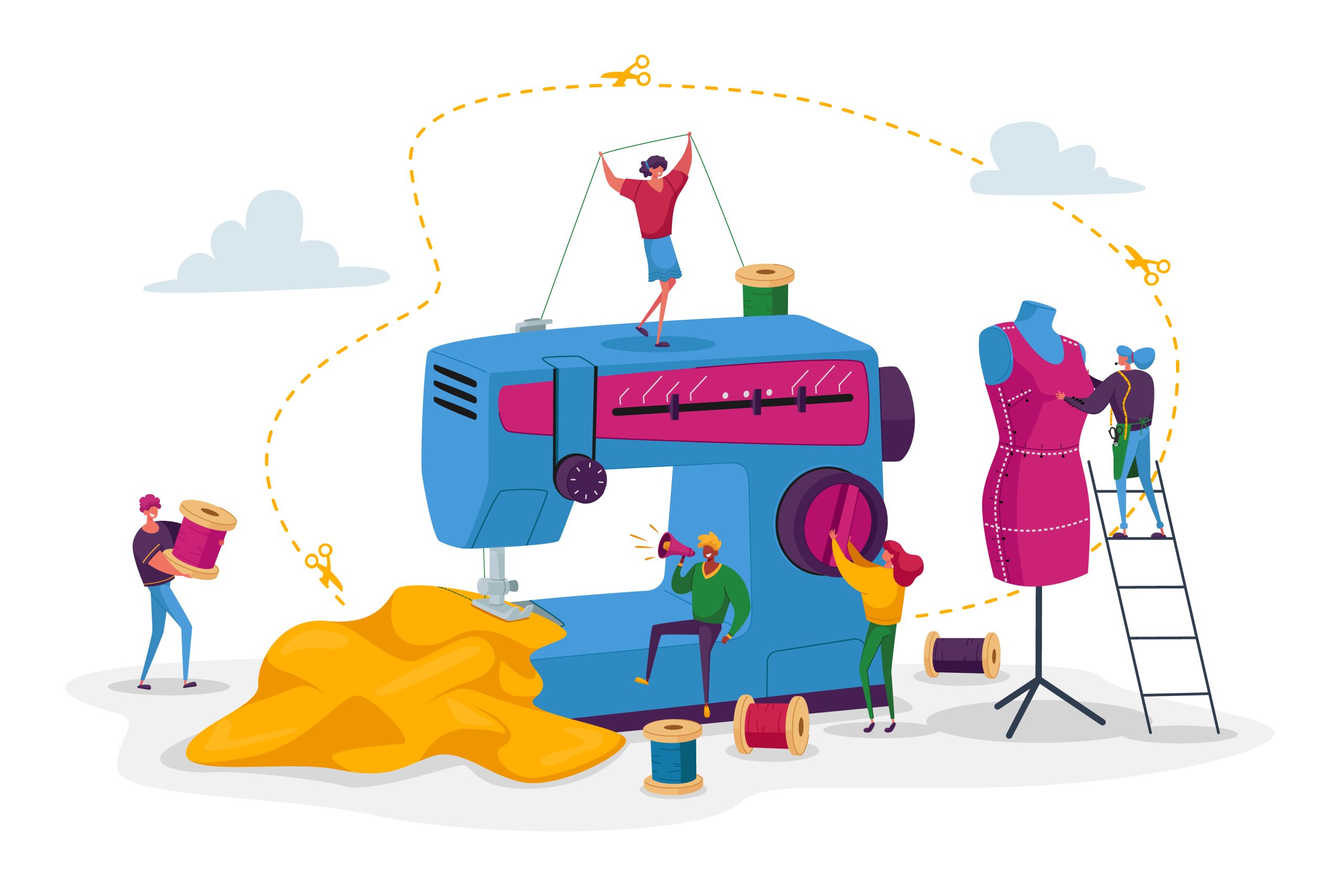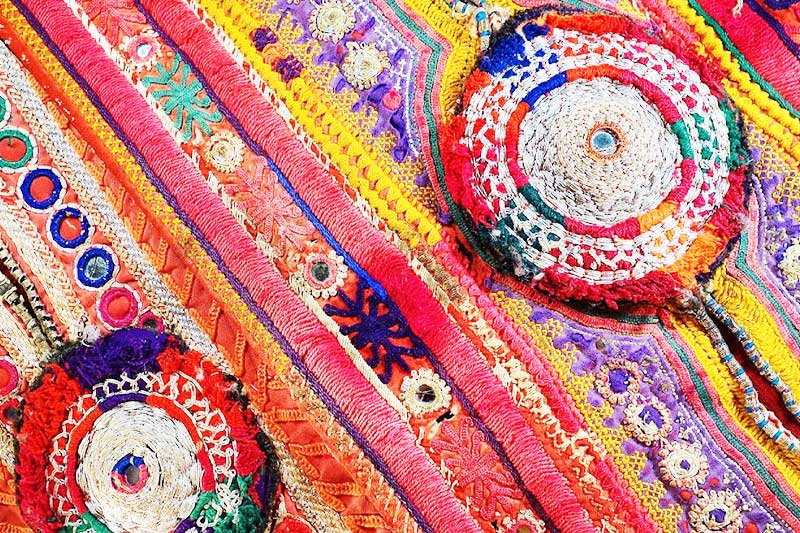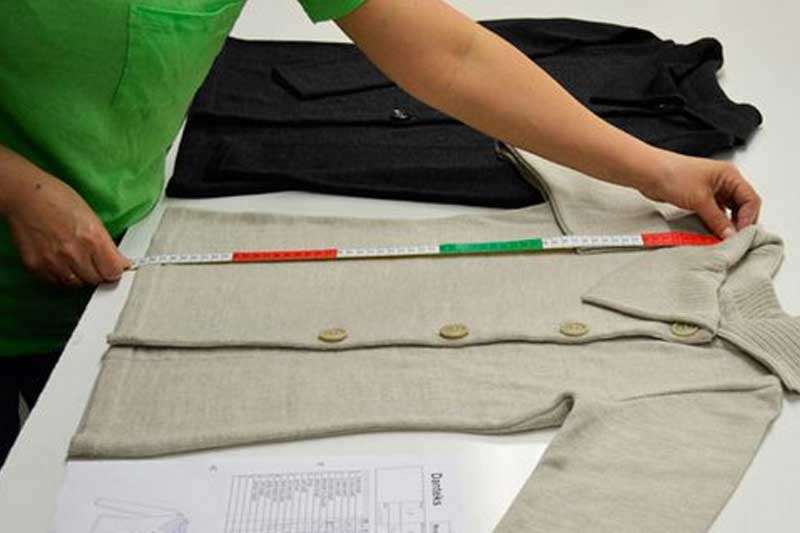Garment And Textile Manufacturing Moving Towards A New Age Of Sustainability

The textile industry is the second-largest sector of the world trade market in terms of economic activity, with a market value of USD 1,230 billion predicted by 2024, up from USD 920 billion in 2018. Sustainable fashion aspires to foster flourishing ecosystems and communities through its actions. This could include increasing the value of locally produced goods, prolonging the life cycle of materials, increasing the value of classic clothing, reducing waste, and reducing the environmental effect of production and consumption. Another one of its objectives is to educate people about environmentally responsible consumption by promoting the “green consumer”.
The concept of long-term growth in the textile and garment industries can be interpreted in a variety of ways. However, its fundamental meaning is wealth that fulfils present needs without jeopardising environmental standards, allowing future generations to live in a sustainable manner. As long as unsustainable processes are used in the textile and garment industries, the consequences will be more severe. As a result, it is vital to devise solutions to achieve a sustainable environment and way of life.
Sustainability in the textile and garment business extends beyond the use of organic products and efficient procedures. The textile industry consumes a lot of water and energy, as well as a lot of chemicals and toxic substances. The bulk of textile enterprises generates a significant amount of toxic waste, putting natural bodies at risk. There is an urgent need to use ecologically friendly production processes and natural resources in order to protect not only the textile sector but the entire ecosystem.
In 2015, United Nations members adopted the 2030 Agenda for Sustainable Development, which included 17 Sustainable Development Goals (SDG) for various industries. Five of the 17 concerns addressed by the textile sector are combating climate change, gender equality, sustainable production and consumption, safe drinking water and sanitation, and decent work and economic progress. Several internationally recognized standards and independent accreditations were developed, providing a yardstick for measuring a company’s sustainability. Textile companies all around the world are working hard to decrease pollution and set emission targets in order to address climate change.
If the textile industry wants to grow responsibly without further harming the environment, it should use carbon-reducing manufacturing practices, invest in R&D for using sustainable raw materials, and produce environmentally friendly finished products. Many worldwide apparel companies are now driving the Sustainability Mission because they are best placed to influence customer sentiment while also relating it to manufacturing and sourcing procedures.
In that emotional, ecological, and ethical qualities are prioritized over uniform and bland efficiency, sustainable fashion traits correlate with “slow fashion” objectives. Slow fashion challenges growth fashion’s obsession with mass production and global style, emerging as a protector of diversity. It shifts the power dynamics between fashion designers and consumers, promoting new relationships and trust on a smaller scale that would otherwise be impossible. It fosters a better knowledge of the design process and its implications for resource flows, workers, neighborhoods, and ecosystems. Slow fashion typically consists of long-lasting products, traditional production techniques, or design concepts that strive to be seasonless or last for longer periods of time in terms of both aesthetically and materially.
What Are The Textile Industry’s Sustainable Practises?
Sustainable textile refers to a manufacturing method that is environmentally friendly, which means that all materials and processes, inputs, and outputs are healthy and safe for people and the environment at all stages of the life cycle. The production and processing of sustainable textiles derived from renewable or recycled sources not only helps to reduce negative environmental consequences but also helps millions of employees earn a fair wage and work in safe conditions.
Material choice
Sustainable textiles begin with environmentally friendly materials. Sustainable clothing materials are made from eco-friendly resources such as rayon, viscose, modal, and natural materials. Natural materials are far more environmentally friendly. Cotton, wool, linen, hemp, mulberry, and ramie are some of the most popular natural materials used in the garment industry. Organic fabrics are biodegradable and recyclable.
Eco-friendly design
The eco-design method considers all conceivable environmental issues, such as ecological, recyclable, ergonomics, and environmental friendliness. It refers to the design of items that cause less environmental impact while also improving a product’s aesthetic and functional features. There has recently been a measured effort in the fashion industry to promote eco-design techniques.
Sustainable Alternatives To Traditional Manufacturing
Textile firms are using ecologically friendly methods to alleviate environmental challenges. Among the choices are:
Whitening (water-saving air dyeing, laser whitening, ozone whitening, and finishing)
Printing (digital printing technology)
Mercerization(electrochemical cell mercerization)
Fashion design that is waste-free, seamless knitting technology, and integrated 3D design technology. Wet process alternatives (chlorine-free bleaching, cold or low-temperature dye processes, dye bath reuse, eco bleach, Ink-jet printing, vegetable tanning, wastewater recycling)
Packaging
Sustainable packaging integrates the three sustainability principles of reduce-reuse-recycle. The primary purpose of sustainable packaging is to cause as little environmental impact as possible. This can be accomplished by employing recycled materials or developing unique packaging functions.
Better management of the Supply Chain
The supply chain management that is required for the firm’s performance and customer happiness is an essential component of the company. Good analytic and reporting capabilities collaborate with machine learning to continuously enhance procedures across the supply chain.
Transportation
Transportation in the textile business can take place via air travel, water, ship, rail, road, pipeline, and the use of planes, boats, and telecommunications equipment. The transportation process requires energy, resulting in the loss of natural resources and the release of carbon dioxide, both of which have a detrimental impact on the environment.
Challenges Still Lurking
The textile sector does not fully adapt to problems such as rising utility costs, a shortage of skilled personnel, rising labour costs, climate change, resource scarcity, weak economic situations, and so on. As a result, the future task will be to identify these dangers and take necessary action to defend its future, protect the environment, and improve the lives of its customers, workers, and suppliers worldwide. To move from a low-cost RMG producer to a value-added goods producer. Invest in independent research and development to strengthen industry-institute collaboration.
Increase the innovative ability of the industries.
In order to find more sustainable technological solutions, emphasise the development of the industry’s technological principles. The most challenging task is achieving sustainability while maintaining market competitiveness.
Future
Today, the textile and fashion industries acknowledge the crucial importance of changing the way clothes are made. Cotton and polyester fibres currently command a sizable market share. They account for 80% of total worldwide garment production. Innovative fibre alternatives, on the other hand, have been developed as part of a more sustainable future. These fibres are less expensive and require less resources. As a result, by carefully picking fabrics and clothing, one can considerably reduce the harmful effects on the environment, animals, and humans. Furthermore, reducing electricity, water, and chemical usage, as well as reducing wasteful processes, will have a positive impact.
More News
Rural India’s Design Labs: Where Craft Meets Contemporary
The overlooked rise of design innovation beyond urban India In the vast, textured fabric of India's garment and fashion industry, the story…View More
India’s Evolving Role in Global Apparel Supply Chains
In the last few years, global apparel supply chains have been tested like never before. From pandemic-related disruptions to rising geopolitical tensions…View More
Quality Control in Garment Manufacturing: What’s Changing in 2025?
In 2025, garment manufacturing is entering a new era—one defined not only by speed and scale, but by precision, consistency, and sustainability.…View More
How to Identify Authentic Indian Handloom Products?
Indian handloom products are a timeless testament to the country’s rich cultural heritage and craftsmanship. From luxurious Banarasi silks to timeless Khadi…View More
How to Start a Garment Manufacturing Business in India?
India’s textile and garment industry has always been a major contributor to the country’s economy, offering vast opportunities for entrepreneurs. With the…View More
Download
Register Now
Recent Posts
Show Countdown
DELHI
Bharat Mandapam (Pragati Maidan), New Delhi, India
- days
- Hours
- Minutes
- Seconds
MUMBAI
Bombay Exhibition Center, Mumbai






